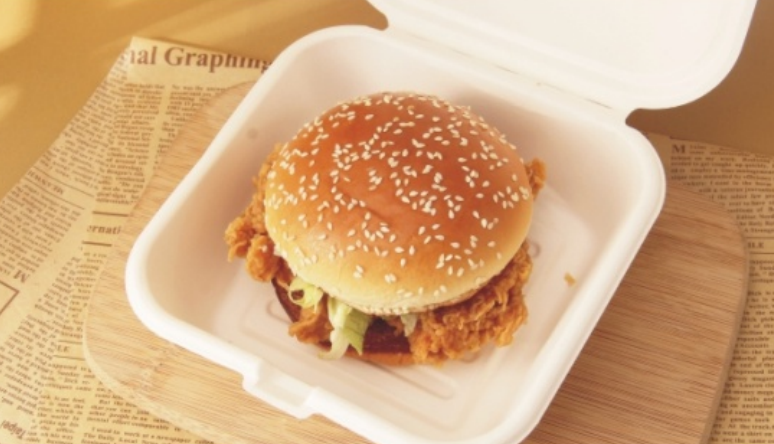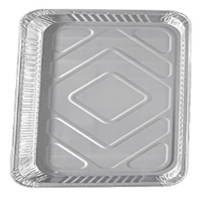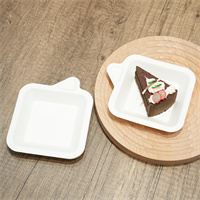In recent years, the disposable food industry has been undergoing a significant transformation, driven by the urgent need for more sustainable and eco-friendly alternatives to traditional plastic. One of the most promising materials leading this revolution is sugarcane bagasse. Derived from the fibrous residue left after extracting juice from sugarcane, bagasse is proving to be a game-changer in the world of disposable food items. This blog post delves into how sugarcane bagasse is revolutionizing the disposable food industry and explores future trends that could further enhance its impact.
The Rise of Sugarcane Bagasse
The shift towards sugarcane bagasse in the disposable food industry is largely driven by growing environmental concerns. Traditional plastics, which are derived from petroleum, contribute significantly to pollution and take hundreds of years to decompose. In contrast, sugarcane bagasse is a renewable resource that is biodegradable and compostable, breaking down within a few months under the right conditions.
Key Benefits of Sugarcane Bagasse
1. Eco-Friendly Production: The production of sugarcane bagasse products involves utilizing a byproduct that would otherwise be considered waste. This not only reduces waste but also minimizes the need for additional raw materials, making it a more sustainable option.
2. Biodegradability: Unlike traditional plastics, sugarcane bagasse products decompose naturally, reducing the burden on landfills and minimizing environmental pollution. They can be composted in industrial composting facilities, turning into nutrient-rich compost that can be used to enrich soil.
3. Reduced Carbon Footprint: The cultivation of sugarcane absorbs carbon dioxide from the atmosphere, helping to offset the carbon emissions associated with the production and disposal of bagasse products. Additionally, the energy required to produce bagasse items is often lower than that needed for plastic production.
4. Versatility and Usability: Sugarcane bagasse can be molded into a variety of shapes and sizes, making it suitable for a wide range of disposable food items, including plates, bowls, cups, and takeout containers. It is also microwave-safe and can withstand both hot and cold temperatures, offering convenience without compromising on functionality.
Transformative Impact on the Industry
The adoption of sugarcane bagasse is not just a trend; it represents a fundamental shift in how the disposable food industry operates. Companies are increasingly recognizing the importance of sustainability and are investing in eco-friendly alternatives to meet consumer demand and regulatory requirements.
1. Consumer Demand: Today's consumers are more environmentally conscious than ever before. They are actively seeking out products that align with their values, and sugarcane bagasse items offer an attractive option. By choosing bagasse products, consumers can enjoy the convenience of disposable items without the associated guilt of contributing to plastic pollution.
2. Regulatory Pressure: Governments around the world are implementing stricter regulations to curb plastic use and promote sustainable alternatives. The European Union, for example, has banned certain single-use plastics, creating a significant market opportunity for sugarcane bagasse products.
3. Corporate Responsibility: Many companies are adopting corporate social responsibility (CSR) initiatives that prioritize sustainability. By incorporating sugarcane bagasse into their product lines, businesses can demonstrate their commitment to environmental stewardship and appeal to eco-conscious consumers.
Future Trends and Innovations
The future of sugarcane bagasse in the disposable food industry looks promising, with several trends and innovations on the horizon:
1. Advanced Manufacturing Techniques: As technology advances, we can expect more efficient and cost-effective manufacturing processes for bagasse products. This will make them more accessible and affordable for a wider range of businesses.
2. Enhanced Product Designs: Ongoing research and development efforts are likely to result in improved product designs that offer even greater functionality and durability. Innovations such as water-resistant coatings and enhanced structural integrity will further expand the applications of bagasse items.
3. Integration with Circular Economy Models: The concept of a circular economy, where products are designed to be reused, recycled, or composted, is gaining traction. Sugarcane bagasse fits seamlessly into this model, and we can expect to see more initiatives aimed at creating closed-loop systems for disposable food items.
4. Collaborations and Partnerships: Collaboration between industry stakeholders, including manufacturers, retailers, and waste management companies, will be crucial in driving the widespread adoption of sugarcane bagasse. Partnerships aimed at improving composting infrastructure and raising consumer awareness will play a key role in the material's success.
Conclusion
Sugarcane bagasse is revolutionizing the disposable food industry by offering a sustainable and eco-friendly alternative to traditional plastics. Its numerous benefits, including biodegradability, reduced carbon footprint, and versatility, make it an attractive option for both consumers and businesses. As the industry continues to evolve, we can expect to see even more innovative uses and advancements in sugarcane bagasse products, further solidifying its role in creating a more sustainable future.































